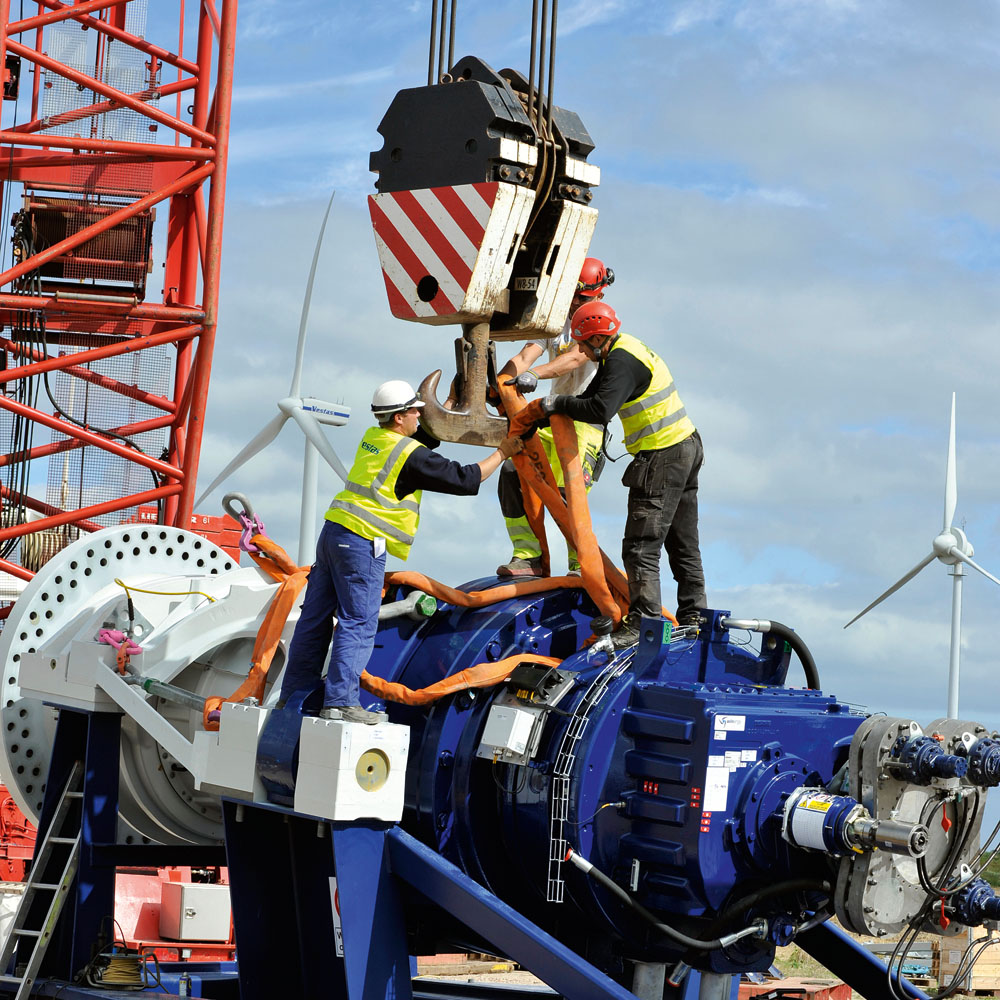Contrary to expectations, no dominant concept has yet come to the fore for the design of drive trains for wind turbines. A number of innovative designs hase been introduced onto the market in recent years, including hydraulic power transmission and integrated gearbox-generator systems. The new demands imposed by special environment conditions, as in the offshore sector, and the requirements of specific markets, as in the case of small wind turbines, have created a need for customized solutions. Just like the other wind turbine components, the different elements that go to make up the drive train also have to satisfy the highest demands where reliability is concerned. Therefore, an accelerated validation process is becoming increasingly important.

Design Validation of Drive Trains and Associated Components
The FVWE´s key activities include the improvement of current generator systems and the development of new concepts, mechanical integration, optimized magnetic circuits, the application of new materials for the electrical engineering sector, magnetic technology and high-temperature superconductors (HTS). Generator-matched control techniques for the medium-voltage range, detailed loss evaluations and thermal analyses complete the current activities in this area.
When designing wind turbines, structural durability and life expectancy are vital factors for ensuring the reliability and long-term technical availability of the product. However, the route to higher performance categories and the associated upscaling of components introduces new and unexpected effects. The Research Alliance Wind Energy provides large-scale test bench facilities that can be used to investigate the current design approach to large-sized components and achieve better design reliability, as well as to create the right conditions for weight-saving developments. Theoretical component-layout models and procedures for accelerated fatigue testing can also be improved and validated using dedicated measurement programs.
Drive Train Control
As in the case of rotor blade development, control systems can also be used to optimize the operating characteristics of the turbine. The FVWE is now testing new techniques that work without the need for additional sensors and only require the system signals currently available. In this way, it will be possible to achieve robust and cost-effective control of the drive train dynamics.
Power Electronics
Power electronics, which are becoming increasingly complex, have several duties to perform in a wind turbine. On the one hand, they enable yield- and load optimized, highly dynamic, speed variable operation, and, on the other hand, they meet various grid-side requirements with respect to frequency and voltage stability, even in the event of a fault occurring. In order to satisfy these demands the FVWE is now developing new modular inverter systems based on innovative materials and high-frequency control concepts. Work is also under way to investigate and improve the way in which large numbers of systems of this kind can be integrated into the grid.
